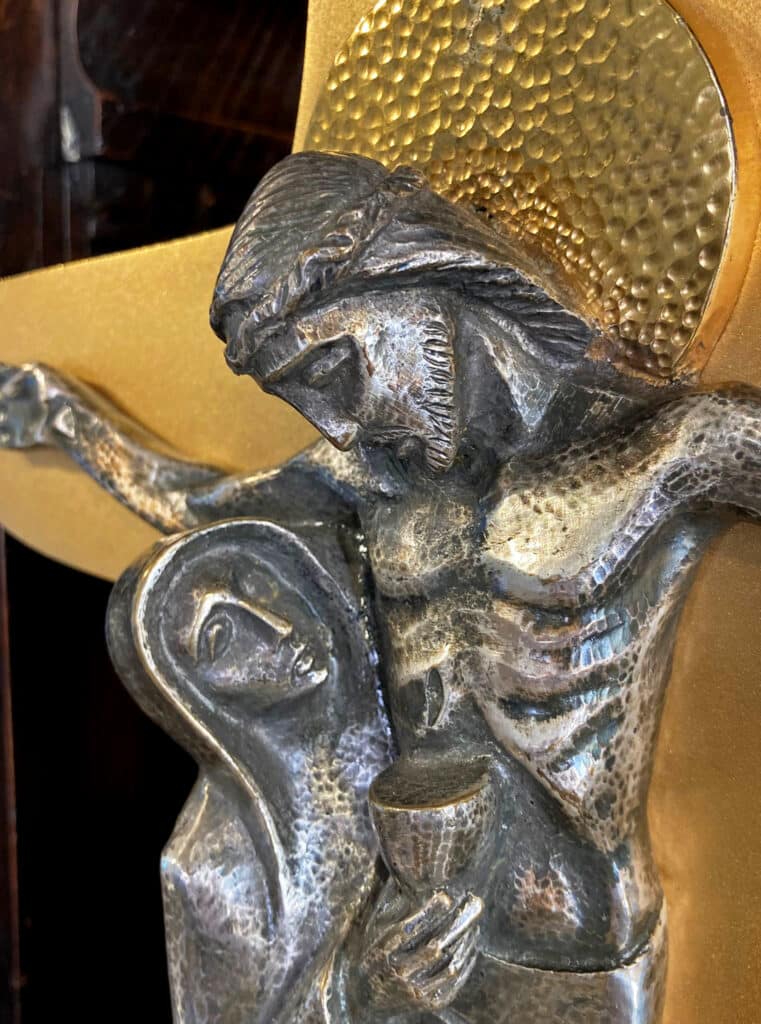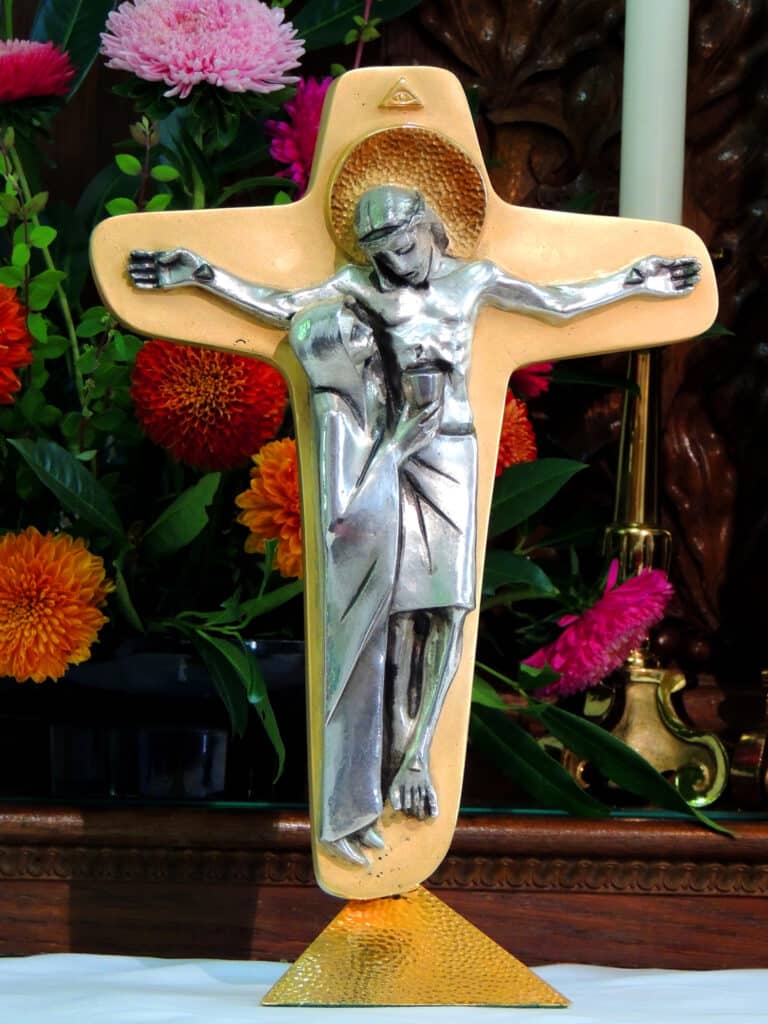Every year on September 14, our Schoenstatt Family celebrates the Exaltation of the Cross together with the Church, on the eve of a new anniversary of the death of our Founder, Father Joseph Kentenich. On this feast we celebrate that on September 14, in the year 630 the relic of the Holy Cross, which had been found by St. Helena in 320 and stolen from the Basilica of the Holy Sepulcher by the Persians in the year 614, was brought back to Jerusalem.
We also want to look at the Crucified One and recognize in the Cross some of the fundamental traits of the image of Christ that our Father and Founder professed.
I was not alive at the time when the Unity Cross was created. I was given the privilege of having contact with some of the protagonists of that history and I would like to share, in my own words, what I heard, together with other people from that time.
A little history of the Unity Cross
The ordination of the first Chilean young men who had opted for the priesthood in the community of the Schoenstatt Fathers was approaching. As a token of gratitude for having been chosen and for the history that the Lord and the Blessed Mother had made with them, they wanted to offer them a gift. At first, they thought of a crown and gradually, after a talk that Father August Ziegler gave them about the image of Christ that Father Joseph Kentenich had, they decided to design a Cross. The first Chilean to be ordained would take it to the Bellavista Shrine.
At that time the Schoenstatt Family that lived around the Shrine of Bellavista was experiencing a time of intense unrest. What these young men had experienced as a brief foretaste of paradise through the family atmosphere that they had enjoyed had been shattered. At one point the Episcopal Conference of Chile prohibited new groups from joining the Schoenstatt Movement, since it was during the Founder’s exile period.
Faced with this situation, the reaction of different individuals and communities was to take seriously the contributions to the capital of grace. It is unfair to name only a few people, but they all played an important role, among them, Sr. M. Teofila, Mario Hiriart, Father Hernán Alessandri, etc.
One of the seminarians visited a priest in Santa Maria, Brazil and saw in his room a Maria Laach sculpture where Mary was standing next to the Cross. He then showed it to the seminarian, Angel Vicente, a sculptor, who began to work on it.
Image of Christ
We could say that the image of Christ that our Father and Founder holds is the Christ of attachments or relationships: it shows us the relationship between Jesus and God the Father, with mankind, with the mission, with Mary and with ourselves. August Ziegler spoke to them about this when he presented Father Joseph Kentenich’s image of Christ, he spoke to them about the Father-centered, fraternal, apostolic, Marian and priestly Christ.

The Father-centered Christ is represented by the “Eye of the Father” in the upper part of the Cross. It wants to express that Jesus only wants to carry out the Will of the Father, that He seeks to have exclusive and excluding moments with Him to have a conversation, to discern and to do only what the Father wills, when He wills it and how He wills it.
The fraternal Christ: the Christ of the Unity Cross is not a dead Christ, he is alive, with his arms open to Humanity, where each one of us has our own space. It is the Jesus for each and every one of us and who is in a deep dialogue with Humanity in the eyes of Mary.
The apostolic Christ: is expressed in the open wound, from which blood and water flow. This apostolic dimension is much more explicit in the Cross with the red background where the Blood and the Holy Spirit are depicted as the background of Jesus’ surrender. He has been moved by the Spirit to follow the Will of the Father and to give his life for each one of us.
The Marian Christ: this is possibly one of the characteristics that most attracts our attention. The Blessed Mother at the Lord’s side, as she has been from the very first moment. Mary’s presence at the Annunciation indicates that Jesus is God because his conception was the work of the Holy Spirit. Her presence on the Cross indicates that Jesus is man, a man who, like us, dies. In his case, giving himself out of Love to the Father and to us. This “Marian color” is the one that we want marking our whole life.
The priestly Christ: we cannot forget that the young men who were expressing their yearnings and the yearnings of Father Kentenich at this time were called to the priesthood. They wanted to place themselves in the Chalice, in the hands of the Blessed Mother to take the Lord and His sacrifice to all the places where they were to be sent. In the Chalice of the original Unity Cross there is a bead from Sister Theophila’s rosary. During the difficult times that the Schoenstatt Family was experiencing in Bellavista, Sister Teofila told these young people to give their all for unity. This longing and petition left its mark on them not only because of what it meant and how it touched their hearts, but also because she told them that she would offer her life for this.

The Miracle of Unity
The miracle of Unity was fulfilled in an unexpected way when the first Chilean ordained priest, Fr. Humberto Andwanter, celebrated Mass for the first time in the Shrine of Bellavista, the Mass of the Shepherds on December 24, 1960. I heard one of the people who was present at that Mass say that what he experienced at that time was like lighting a fireplace in a freezing room and that the family warmth they felt melted the barriers that, up to that moment, had existed within the Family.
By placing the Christ of attachments at the center of the Family, our life becomes ordered. Love for God, for others, for oneself, for the mission are put in order. Our history bears witness to this.
Translation: Maribel Acaron
